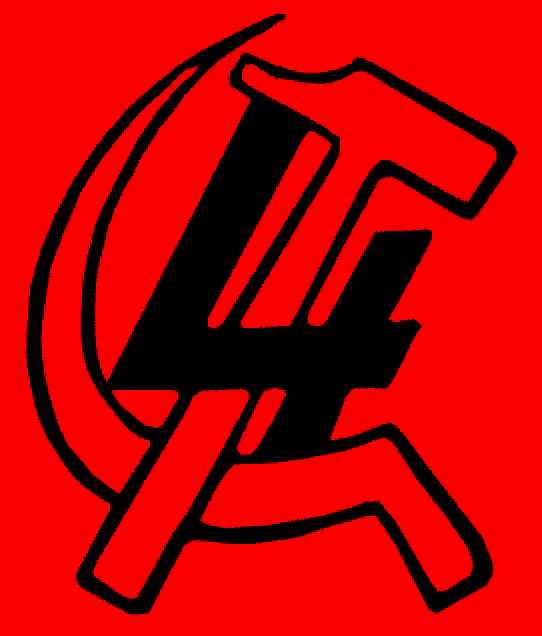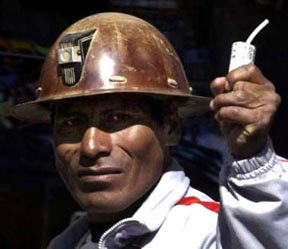
 |
Bolivia:
Class Battles
in the
AndesArticles From
|
Coup Threats, Rightist Maneuvers vs. Calls for “Workers to Power”
Bolivia Explodes in Sharp Class Battle
Form Workers, Peasants and Soldiers Councils!
Build the Nucleus of a Genuine Trotskyist Bolshevik Party!
After three weeks of massive mobilizations, tens of thousands of workers and peasants are besieging Bolivia’s central government plaza seeking to shut down the Congress. Tin miners, teachers and other sectors chant “Obreros al poder” (workers to power) while banners call for “Revolution now!” In the largest and fiercest protests since the “gas war” of October 2003, protesters are demanding nationalization of the country’s oil and gas fields. Some leaders of the peasant movement are calling for a constituent assembly, hoping to divert the mass unrest into parliamentary channels. While right-wingers plot a military coup, reformist union tops are calling for a bourgeois populist “civilian-military” regime, “like Hugo Chávez” in Venezuela. The class battle is coming to a head, as the choice is posed: advance toward a revolutionary outcome or face defeat at the hands of the bourgeoisie, whether in “democratic” guise or through naked military force. The desperate need of the hour is for genuinely revolutionary leadership.
(English) Bolivia Explodes in Sharp Class Battle (1 June 2005)
(Español) Bolivia estalla: encarnizada batalla de clases (1° de junio de 2005)Myth and Reality
El Alto and the “People’s Assembly”
On June 8 a “National and Indigenous People’s Assembly” (APNO) was formed in El Alto, the working-class city on the heights above the Bolivian capital of La Paz. Self-proclaimed socialist and would-be revolutionary groups hailed this as the birth of a new soviet-type body. The resolution founding the APNO proclaimed El Alto the “general headquarters” of the Bolivian Revolution. Yet behind the rhetoric, the reality is quite different. The Assembly is not a centralizing organ of dual power but a cartel of opportunist leaders who promptly sabotaged key decisions and struck a truce with the new government. What is key is forming the nucleus of an authentic Trotskyist party. A detailed and revealing report from the scene.
Eyewitness La Paz
Bolivian Capital Shut Down by Mass Protest
President Carlos Mesa submitted his resignation tonight after tens of thousands of workers, peasants, Indians and poor people streamed down into the capital of La Paz calling to shut down parliament and hang the crooked politicians. They were demanding nationalization of Bolivia’s oil and gas resources now being looted by the imperialist energy cartel. Bourgeois nationalization is not enough, workers must seize the installations on the road to socialist revolution.
(English) Bolivian Capital Shut Down by Mass Protest (6 June 2005)
(Español) La capital boliviana paralizada por masivas protestas (6 de junio de 2005)
Pitched Battles in the Streets of La Paz
Battles erupted in Bolivia’s capital Tuesday, showing that the resignation offer by President Carlos Mesa resolved nothing. The rightist head of Congress, Vaca Díez, is plotting to seize control. Amid exchanges of tear gas and dinamitazos, workers, slum dwellers and peasants tried once again to fight their way into Plaza Murillo, seat of Bolivia´s government. As class polarization deepens, the situation cries out for revolutionary leadership. In a vacuum of power, workers, peasants and soldiers councils should be formed. The key: forging the nucleus of a genuine Trotskyist party.
(English) Pitched Battles in the Streets of La Paz (7 June 2005)
(Español) Batallas campales en las calles de La Paz (7 de junio de 2005)
Leaders Proclaim “National Popular Assembly”
Bolivian Workers Move Against Threatened “Constitutional Coup”
For a Workers, Peasants and Indian Government!
Thousands of miners and peasants have moved to surround the central zone in the city of Sucre where the Bolivian Congress was scheduled to name a new president. The right-wing supporters of the government that massacred protesters in October 2003 want to install Senate chief Hormando Vaca Díez, a representative of the Santa Cruz bourgeoisie, as chief of state. Meanwhile, labor and peasant leaders have proclaimed a “National PopularAssembly” in El Alto. Such calls betray a class-collaborationist perspective, harking back to the ill-fated Popular Assembly of 1971, which failed to stop the Banzer coup. Authentic Trotskyists fight instead for proletarian organs of dual power.
(English) Bolivian Workers Move Against Threatened “Constitutional Coup” (9 June 2005)
(Español) Trabajadores bolivianos se movilizan contra amenaza de “golpe blanco” (9 de junio de 2005)
Bourgeoisie Installs “Harvard Boy” Rodríguez
Bolivia Was “On Brink of Civil War”
June 9 was a day when Bolivia came to the brink of civil war, but the bourgeoisie pulled back. Up to the last minute, right-wing forces backed by the U.S. embassy had been pushing to install hardliner Hormando Vaca Díez as president. But thousands of miners and peasants mobilized to stop this “constitutional coup.” When troops killed a miners leader, opposition reached fever pitch. By the end of the day, the head of the Supreme Court was appointed as a stop-gap president. In return, Evo Morales, leader of the peasant-based Movement Toward Socialism, lifted highway blockades around the country, stabbing protesting workers in the back. It was a betrayal long foretold, and union and left groups played into his hands.
(English) Bolivia Was “On Brink of Civil War” (10 June 2005)
Bloody Repression Against Oruro Campus Takeover
Solidarity with Bolivian Student Struggle!140 Dead – President Flees as Miners Pour Into La Paz
Vice President Takes Over Due to Union Tops’ Sellout
Bolivia: Workers Uprising Knifed,
Workers Still on Battle Footing
After weeks of huge and increasingly combative mobilizations, on October 17 Bolivian president Gonzalo Sánchez de Lozada fled the country, leaving his vice president Carlos Mesa in power. In order to please his masters in Washington, the murderous president drenched the country in blood, with a toll of 140 dead and some 500 injured, according to the figures of the Central Obrera Boliviana (COB – Bolivian Labor Federation). It was the miners who were decisive in forcing the flight of Sánchez de Lozada. Yet by granting an “intermission” to “Goni’s” successor, the leaders of the COB, together with those of the Movement for Socialism (MAS) and the Indian movement, betrayed the workers who fought so heroically against the puppet regime in the “gas war.” Many fake leftists are hailing the “victory,” but toppling the hated president and replacing him with his anointed successor is hardly a victory. The League for the Fourth International, in contrast, stresses that the key demand continues to be: Workers to power! The urgent task is still the construction of the nucleus of a genuinely Trotskyist Bolshevik party.
(English) Bolivian Workers Uprising Knifed (26 October 2003)
(Spanish) Bolivia: levantamiento obrero apuñalado (26 de octubre de 2003)Massacre Outside La Paz – Discontent Among Troops – Workers on Battle Footing
Bolivia Aflame: “Gas War” on the Altiplano
Workers to Power!
For the last month, Bolivia has been shaken by massive mobilizations against the government of Gonzalo Sánchez de Lozada and his plans to export gas to an imperialist consortium. In Bolivia’s “gas war,” anger is rising as workers’ and peasants’ blood flows on the altiplano (high plateau). In this hard fight against a powerful enemy, what’s needed is unity with the Chilean, Peruvian and North American working people. Bolivian workers have once again demonstrated the heroism that has characterized so many moments of their history. But despite their enormous militancy, the key element is still missing: a revolutionary internationalist leadership with the class program and determination needed not only to overthrow the hated “Goni” (Sánchez de Lozada) but to sweep away the entire bourgeoisie and its repressive apparatus, through socialist revolution that spreads internationally.
(English) Bolivia Aflame - Workers to Power (14 October 2003)
(Spanish) Arde Bolivia: ¡Obreros al poder! (14 de octubre de 2003)
|
|